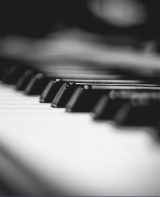What do the pedals do?
All modern pianos have at least 2 pedals:
The sustain pedal on the right lets the sound ring on by lifting the dampers off the strings
The “quiet” pedal on the left controls power of sound in various ways depending on the piano design. In an upright the left pedal moves the hammers forward to reduce the blow distance and the striking force. In a grand the left pedal moves the whole keyboard and action sideways so the hammers strike fewer strings making less sound, hence its name “Una Corda” (one string).
Middle pedals serve various roles depending on the model of piano.
On most uprights the middle pedal is called a Practice or Mute pedal and lowers a felt strip between the hammers and strings making a muted sound.
On most grands and some high quality uprights the middle pedal is called a Sostenuto pedal and sustains only those notes that are being held down when the pedal is depressed, allowing future notes to be unaffected.
On some lower quality grands and uprights the middle pedal lifts only the bass dampers while leaving the treble dampers unaffected.


